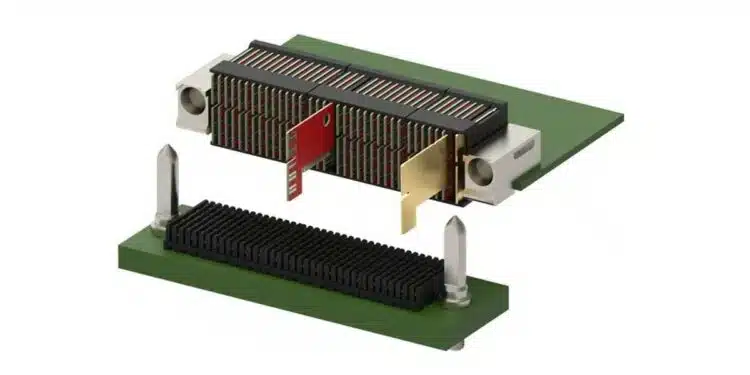TE Connectivity, a global leader in connectivity and sensors, announced that its MULTIGIG HD connector has been chosen by the VITA Standards Organization (VSO) as the Next-Generation VPX plug-in module connector. This designation solidifies its position as a defense industry standard.
The redesigned MULTIGIG HD connector, a significant advancement over previous variants of TE’s MULTIGIG HD product family, doubles the pin count, achieves 112 Gb/s data rates, increases current capacity, and supports rugged environments. The release date is scheduled for mid-2025.
“Selection as the VITA Standard for our next generation MULTIGIG HD connector is the culmination of two years of dedicated research and development by our innovative cross-functional team,” said Michael Walmsley, senior project manager at TE Connectivity. “This connector brings with it a foundation for future expansion and will uphold TE’s leadership position in VPX for decades as we extend the MULTIGIG HD product line into higher-speed embedded systems.”
The MULTIGIG HD connector, built on the success of VITA 46.x connectors, doubles the pin count to support higher data rates up to 112 Gb/s. Developed by TE to meet the demands of Next-Generation VPX and the rugged environmental requirements of VITA 47.3 and VITA 72 standards for extreme vibration levels, the redesigned MULTIGIG HD connector is segmented to fit existing RF and optical connector modules while optimizing pin density. Compatible with 3U, 4U (latest), and 6U OpenVPX form factors, it also features advanced wafer technology that allows for direct termination of AC coupling capacitors and eventual integration of optical transceivers within the connectors.
The VSO selection means the new MULTIGIG HD connector design will be incorporated into the VITA 100 Next-Generation VPX system architecture used widely across rugged embedded computing systems in the defense industry.
For decades, TE has served defense customers in a wide range of applications including ground vehicles, military aircraft, naval vessels and space technology. TE’s MULTIGIG HD 2 connectors were adopted as the VPX backplane connector interface almost 20 years ago. Since then, MULTIGIG HD connector variants have evolved in ruggedness and speed to support a broad VPX ecosystem.
The latest MULTIGIG HD connector successfully addressed the needs and feedback of VITA members and won the VSO connector selection vote in July 2024.































